Robert Lea is a science journalist in the U.K. whose articles have been published in Physics World, New Scientist, Astronomy Magazine, All About Space, Newsweek and ZME Science. He also writes about science communication for Elsevier and the European Journal of Physics. Rob holds a bachelor of science degree in physics and astronomy from the U.K.’s Open University. Follow him on Twitter @sciencef1rst.
Latest articles by Robert Lea
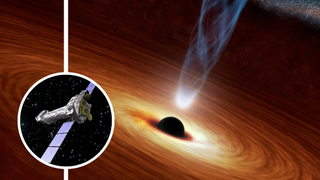
This supermassive black hole is eating way too quickly — and 'burping' at near-light speeds
By Robert Lea published
Using the XMM-Newton telescope, astronomers have witnessed high-speed "burps" erupting from a distant overfeeding supermassive black hole.
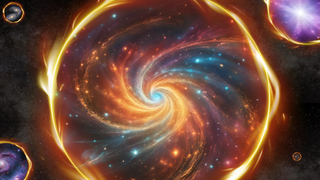
A spinning universe could crack the mysteries of dark energy and our place in the multiverse
By Robert Lea published
The universe seems to be spinning, and that could explain what dark energy is and why it's weakening while revealing our place within the multiverse.
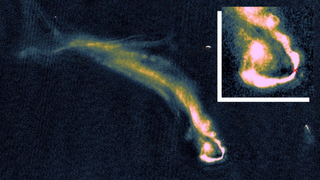
This galaxy cluster has mysterious cosmic tendrils over 200,000 light-years long (image)
By Robert Lea published
Astronomers have taken an unprecedentedly detailed look at the tendrils and filaments that wrap around supermassive black hole-dominated galaxies of Abell 2255.
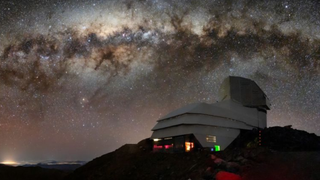
1st images from the Vera C Rubin Observatory will drop on June 23. Here's why that's such a big deal
By Robert Lea published
The Rubin Observatory will reveal its first images on Monday. Space.com spoke to scientists who explained why this will be a monumental event for astronomy.
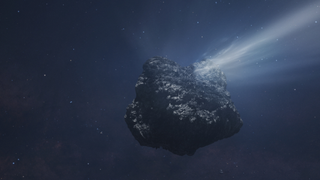
Astronomers discover the largest comet from the outskirts of the solar system is exploding with jets of gas
By Robert Lea published
The monsterous 85-mile-wide comet C/2014 UN271 isn't just the largest icy rock in the Oort Cloud, it's the second most distant that is chemically active.
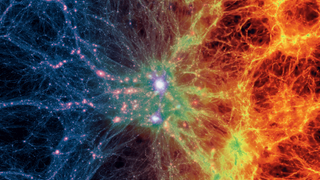
'The models were right!' Astronomers locate universe's 'missing' matter in the largest cosmic structures
By Robert Lea published
Using the XMM-Newton telescope, astronomers have discovered a vast 23 million light-year-wide tendril connecting galactic clusters and containing much of the universe's missing matter.
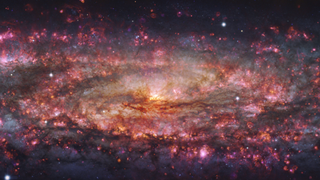
Astronomers capture the most intricate picture of a galaxy in a thousand colors ever seen (photo, video)
By Robert Lea published
A stunning new image of the Sculptor Galaxy, located 11 million light-years away, painted in thousands of colors by the VLT, reveals the intricacies of galactic systems.
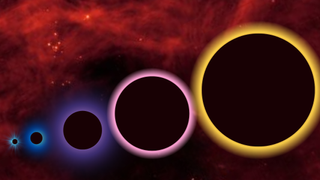
Tiny ‘primordial’ black holes created in the Big Bang may have rapidly grown to supermassive sizes
By Robert Lea published
Supermassive black holes that seem too large to exist in the early universe may have grown from primordial black holes formed in the first second after the Big Bang.

Mysterious radio pulses detected high above Antarctica may be evidence of an exotic new particle, scientists say
By Robert Lea published
A mystery signal detected high in the sky above Antarctica defies current models of physics and could represent a new particle, scientists say.
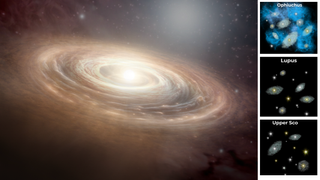
How do baby planets grow? Study of 30 stellar nurseries sheds new light
By Robert Lea published
Astronomers have used the ALMA radio telescope to investigate how planets grow in protoplanetary disks of gas and dust around young stars.
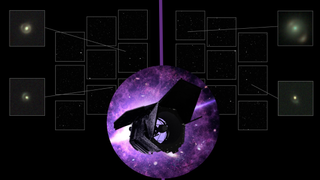
Roman Space Telescope will use a century-old idea from Einstein to probe the nature of mysterious dark matter
By Robert Lea published
Get ready for a new Roman Empire: A NASA space telescope will detect a staggering wealth of intricate gravitational lenses that could help unlock the mysteries of dark matter.
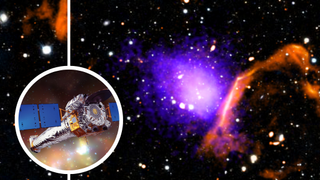
Huge galaxy cluster is wrapped in a cocoon 20 million light-years wide, NASA space telescope finds
By Robert Lea published
Using NASA's Chandra X-ray space telescope, astronomers have discovered an entire galaxy cluster wrapped in a 20 million light-year-wide envelope of charged particles.
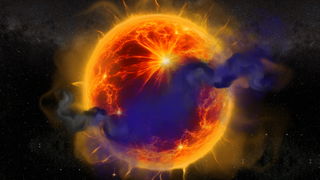
Dark matter 'lampshades' dimming stars could solve one of the greatest scientific mysteries
By Robert Lea published
Dark matter "lampshades" could slip between Earth and distant stars, causing tiny amounts of dimming that may help explain one of the greatest puzzles in science.
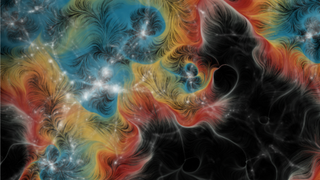
Scientists find universe's missing matter while watching fast radio bursts shine through 'cosmic fog'
By Robert Lea published
Rapid bursts of energy that last milliseconds but emit as much energy as the sun does in decades are helping astronomers pierce the cosmic fog between galaxies to find the universe's missing matter.
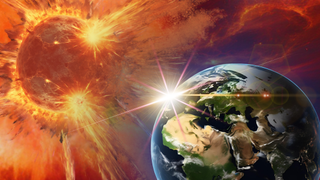
Supernovas may have triggered life-threatening changes in ancient Earth's climate. Scientists say it could happen again
By Robert Lea published
Ancient supernovas may have blasted Earth with powerful radiation, causing dramatic changes in our climate, and could do so again, posing a threat to life.
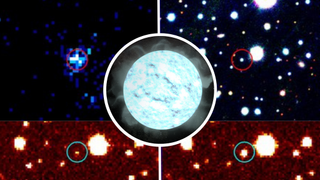
Missing link star? Why this 'teenage vampire' white dwarf has scientists so excited
By Robert Lea published
Astronomers have discovered a "teenage vampire" dead star in the process of devouring a companion star during a short-lived, "missing link" phase of its evolution.
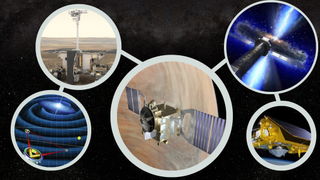
European Space Agency reveals 3 key space missions threatened by Trump's NASA budget cuts
By Robert Lea published
At least three ESA space missions are under threat as a result of Trump's budget cuts. The gravitational wave observatory LISA, Venus orbiter EnVision, and NewAthena may require "recovery actions."
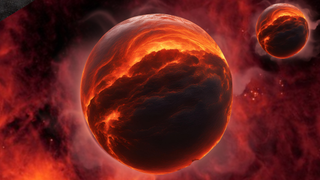
James Webb Space Telescope discovers smallest 'failed stars' ever seen
By Robert Lea published
Using the James Webb Space Telescope, astronomers have discovered the smallest brown dwarfs ever seen with the potential to form planets and surrounded by mysterious molecules.
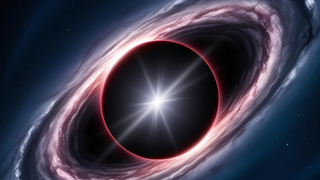
Laws of physics are still broken: Attempt to explain away black holes' central singularity falls short, scientist says
By Robert Lea published
A researcher throws cold water on a recent effort that purported to eliminate black holes' greatest and most enduring mystery — the existence of their central singularity.
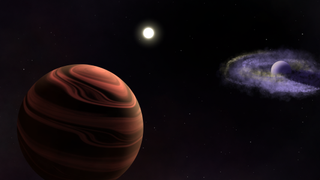
James Webb Space Telescope sees 1st exoplanet raining sand alongside 'sandcastle' partner world
By Robert Lea published
In two related firsts, the James Webb Space Telescope has discovered sand-filled rains on a distant exoplanet as its "sandcastle" partner world forms from sandy matter before the eyes of astronomers.
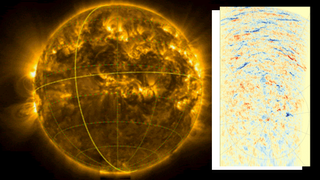
Humanity takes its 1st look at the sun's poles: 'This is just the first step of Solar Orbiter's stairway to heaven' (images)
By Robert Lea published
The Solar Orbiter has captured humanity's first look at the south pole of the sun, revealing messy magnetic fields and particles being ejected at high speeds.
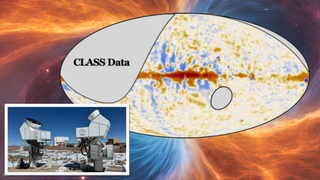
Astronomers see the 1st stars dispel darkness 13 billion years ago at 'Cosmic Dawn'
By Robert Lea published
The CLASS telescope array has taken a fresh look at the infant universe to hunt for polarized light in the Cosmic Microwave Background that resembles light bouncing off a cosmic car hood.
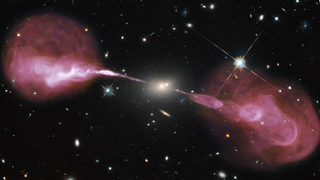
Astronomers discover 15 new giant radio galaxies — the largest single objects in the universe
By Robert Lea published
A new batch of 15 Giant Radio Galaxies, the largest of which is 12.4 light-years wide, could help reveal how black holes and galactic mergers help the universe's largest single objects grow so large.
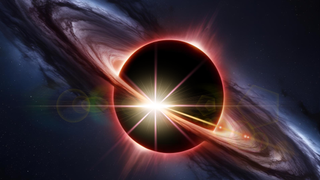
Black holes could work as natural particle colliders to hunt for dark matter, scientists say
By Robert Lea published
Supermassive black holes could act as natural particle accelerators, helping humanity investigate dark matter.

AI could solve puzzles posed by twin stars in 'mere minutes or seconds on a single laptop'
By Robert Lea published
A newly designed, AI-powered program could solve the puzzle of binary stars in mere seconds using a common laptop, a process that currently takes supercomputer clusters weeks.
Breaking space news, the latest updates on rocket launches, skywatching events and more!

